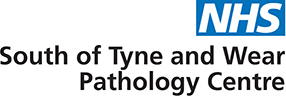Anti Streptolysin O Titre (ASOT)
Code:
ASO
Sample Type:
Yellow top gel tube
Ref Ranges/Units:
<200 IU/ml regarded as normal in adults
Turnaround:
2 days
Special Precautions/Comments:
Interferences: ASO detects group C and G beta-haemolytic streptococci as well as Strep. pyogenes.
False negatives may occur in early infection in children from 6 months to 5 years of age.
False positives may occur in conditions such as scarlet fever, acute rheumatoid arthritis, tonsillitis and other streptococcal infections as well as in healthy adults.
Method: Latex agglutination test for the detection of Antistreptolysin O. Calibration: – EQA scheme: Lab Quality. IQC: Internal kit controls (Lorne Laboratories).
Interpretation: The upper limit of normal is about 200 units/mL. Some 5-10% of normal adults and 5-15% of normal children above the age of 5 have serum titres of this level or more.
Negative samples will be reported as ASO titre <200 IU/ml.
Positive samples (i.e. ≥200IU/ml) will be reported with a semi-quantitative value.
A single laboratory ASO titre does not produce much information about the actual state of the disease. Titrations at weekly intervals during 4-6 weeks are advisable to follow the disease evolution. Clinical diagnosis should include both laboratory and clinical data.
Additional Information:
Background information: Antistreptolysin O titre measurement may be used to confirm primary infections but is more commonly used to diagnose indirect complications of Streptococcus pyogenes infection. Elevated levels of ASO are produced in response to Beta-haemolytic Streptococci of groups A, C and G. Streptolysin O is a toxic extracellular protein with enzymic character and strong antigenic properties. Raised ASO levels are also found in patients suffering from scarlet fever, acute rheumatoid arthritis, tonsillitis and other streptococcal infections, as well as in healthy carriers.


